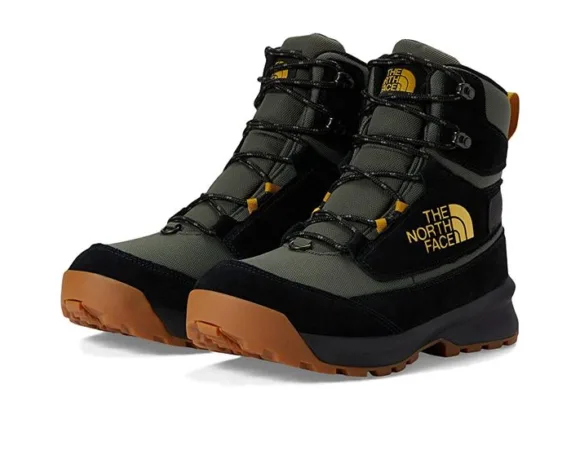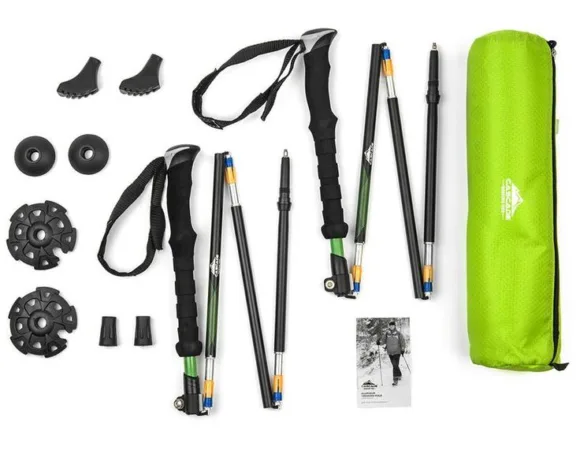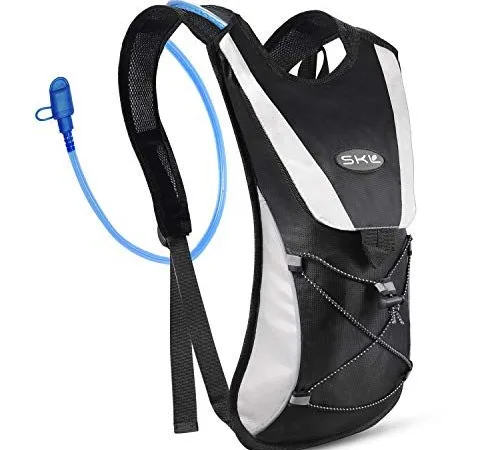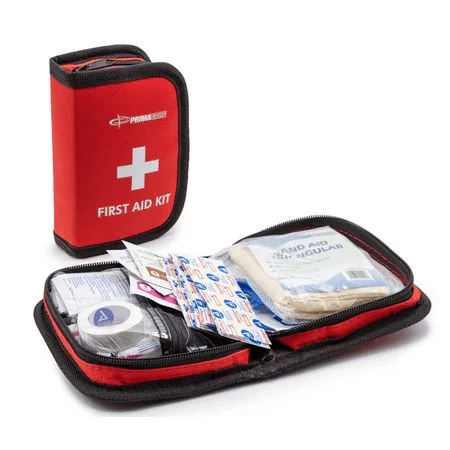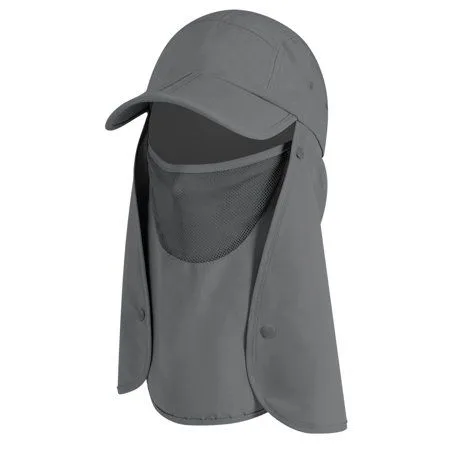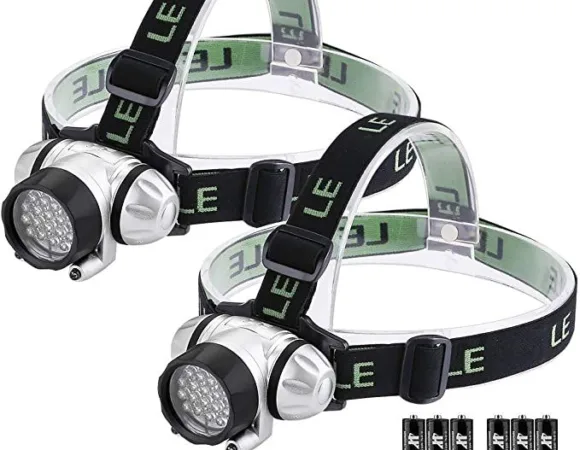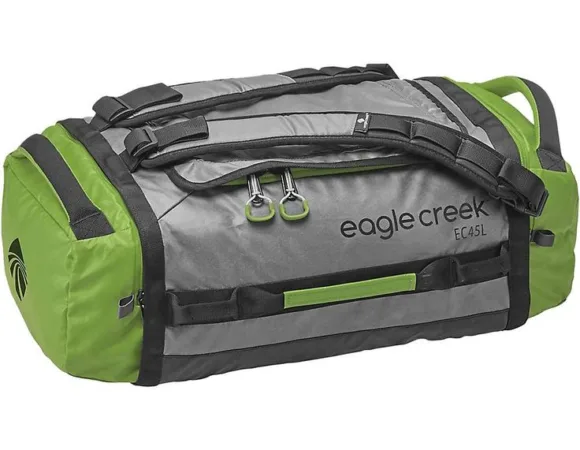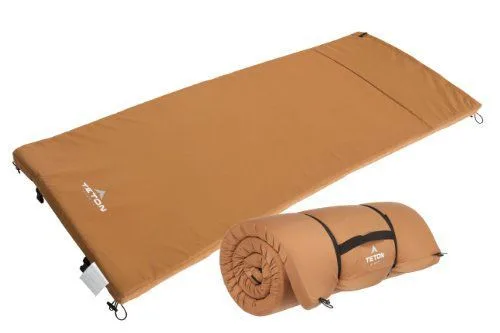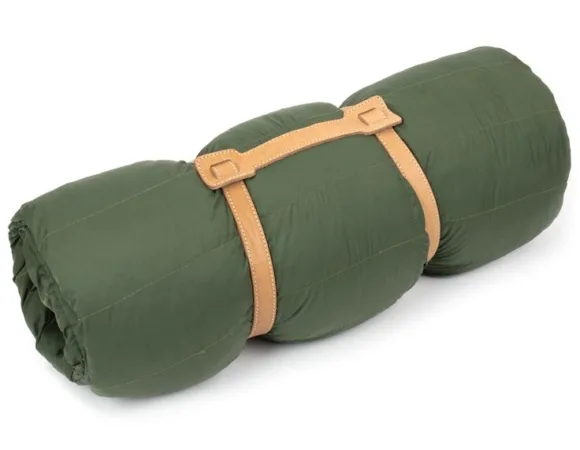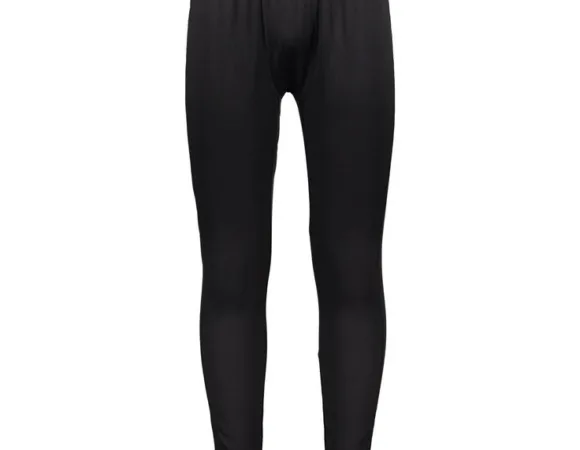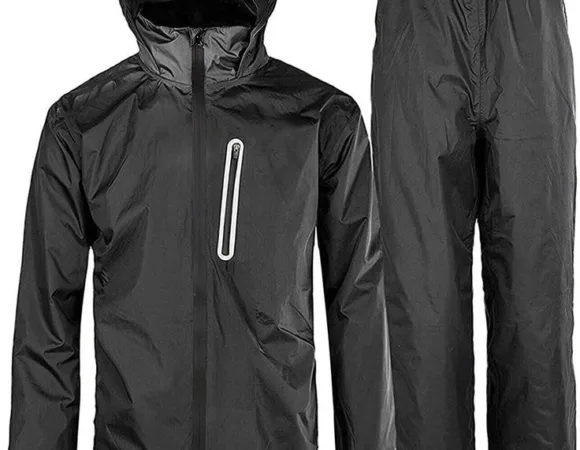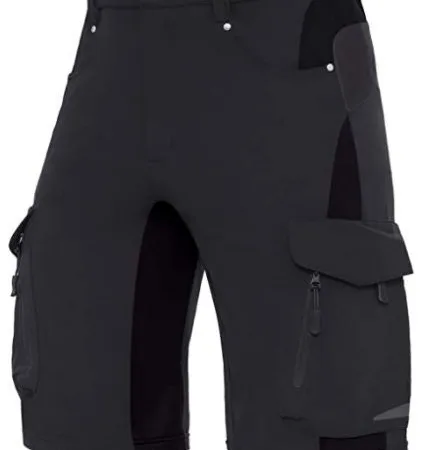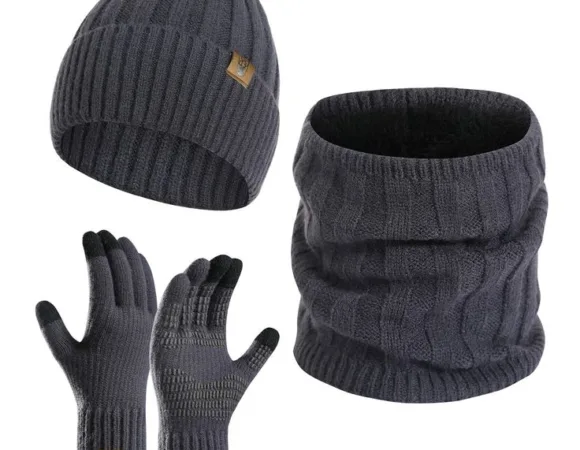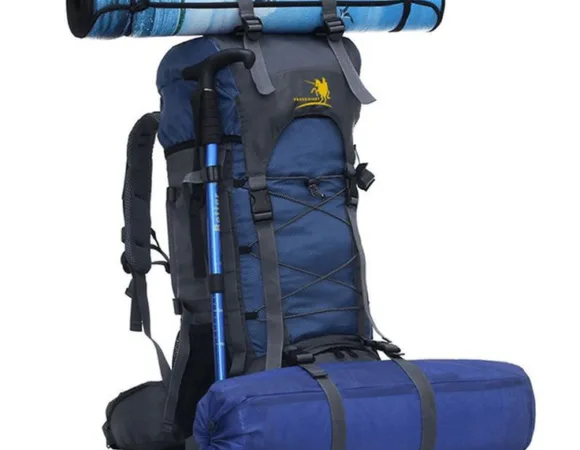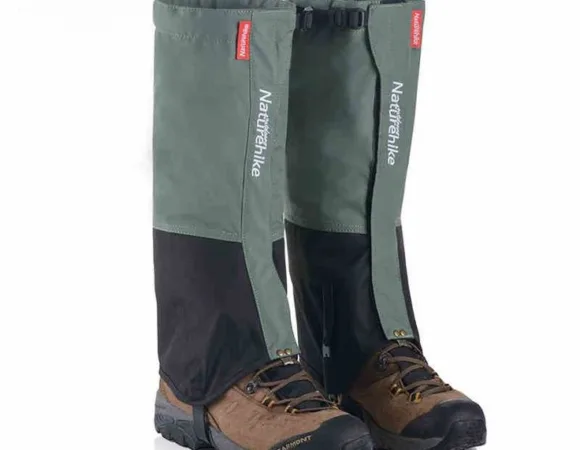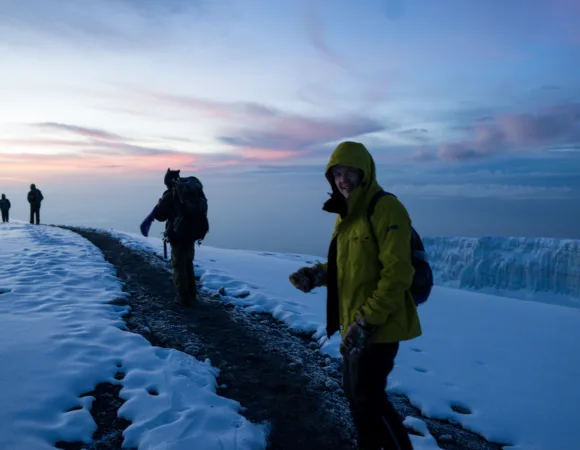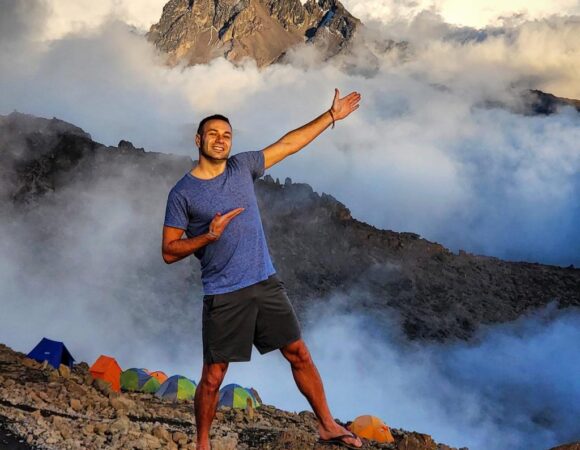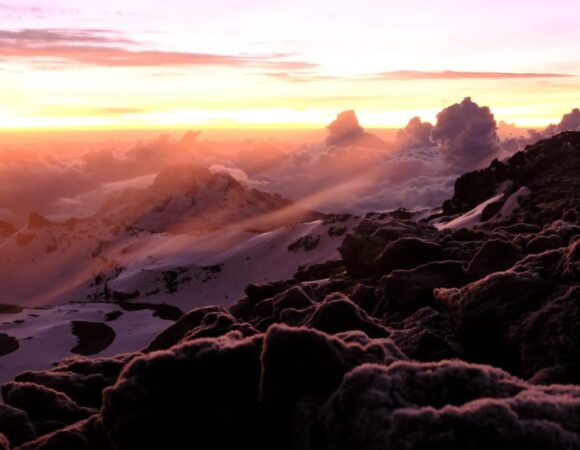The best time climbing Mount Kilimanjaro are during the mountain’s dry seasons when the weather conditions are more favorable for trekking. The main dry seasons are typically from late December to early March and from June to October. These periods offer clearer skies, less rainfall, and better visibility, enhancing the overall climbing experience.
During the dry seasons, the chances of climbing Mount Kilimanjaro is encountered by rain and snow are lower, and the trails are generally drier and more manageable. Also, the temperatures are more moderate, making the ascent more comfortable compared to the wetter and colder seasons.
However, it’s important to note that Kilimanjaro is climbable year-round. Some people also choose climbing Mount Kilimanjaro during the shoulder seasons (March to May and November to mid-December). While these periods may have some rainfall, they tend to be less crowded on the mountain, and the landscapes are lush and beautiful due to the precipitation.
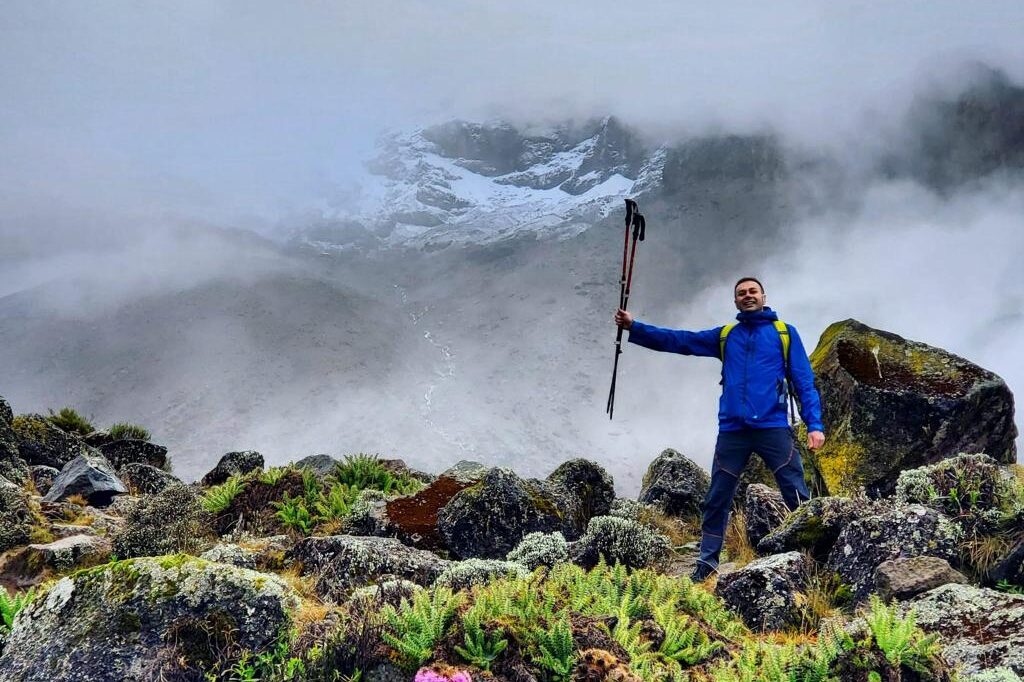
The Machame trail, renowned as the second most popular route up Kilimanjaro, offers a captivating journey that begins amidst the enchanting allure of the lush tropical rainforest on the southern slope. This route, favored by many adventurers, presents an ideal choice for those seeking an immersive seven-day trek. The extended duration allows for a gradual ascent, providing beginners and enthusiasts alike with an improved acclimatization profile, essential for a successful summit attempt. For those considering this remarkable expedition, Serengeti Camping Safari hosts several group climbs that navigate the Machame Route. Their organized climbs offer not just a thrilling adventure but also a structured and guided experience that enhances safety and camaraderie among climbers.
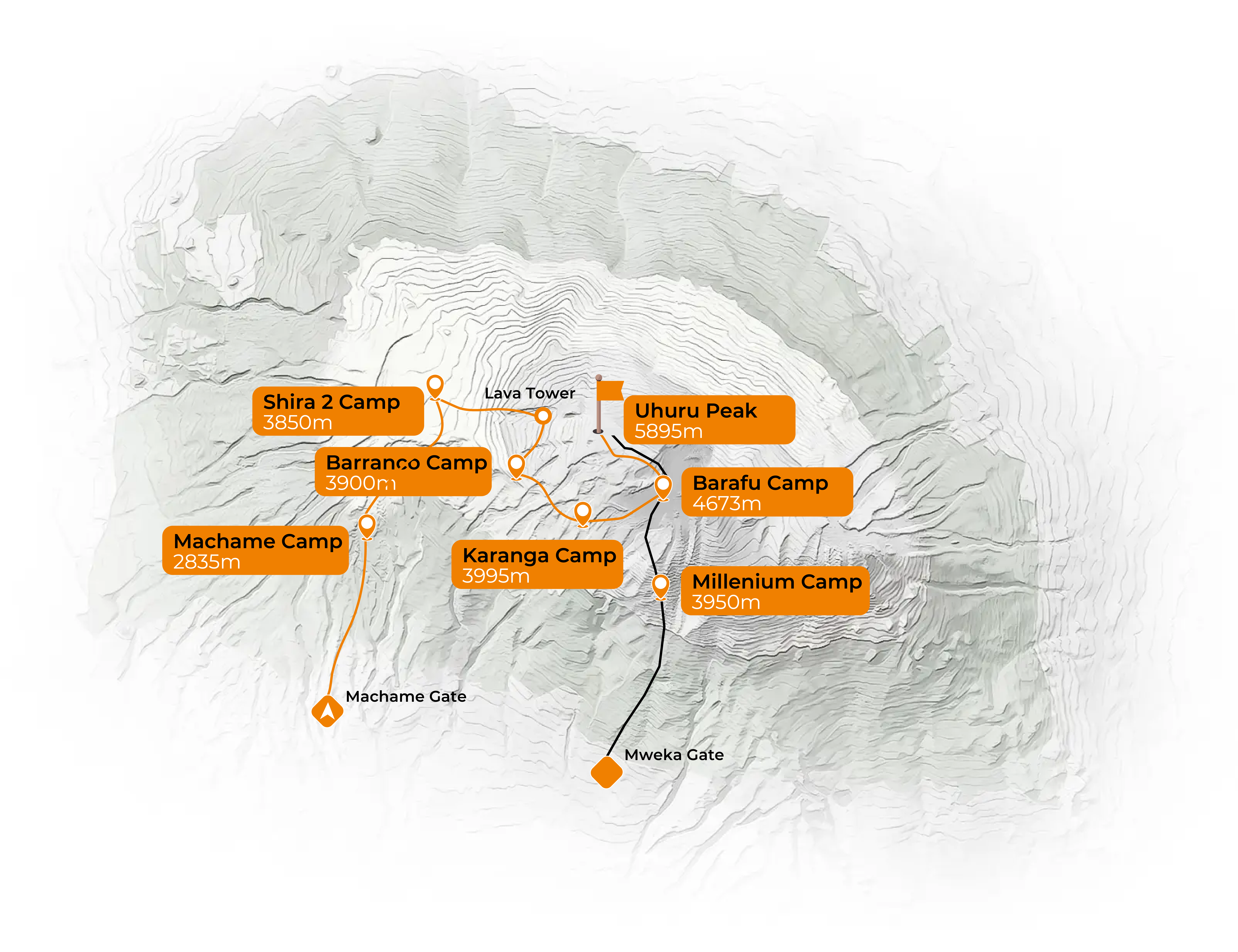
Embarking from the western side of Kilimanjaro, the Lemosho Route offers a unique starting point at a secluded trailhead, setting the stage for an extraordinary journey. Notable highlights along this trail include the renowned Shira Plateau, an expansive and breathtaking landscape, and the majestic Cathedral Peak, which proudly stands at an impressive elevation of 3,962 meters (13,000 feet), marking the summit of Kilimanjaro’s western slope. Regarded as an ideal choice for climbers seeking optimal acclimatization, the Lemosho Route has garnered acclaim among our seasoned experts as one of the premier options available. Its gradual ascent and diverse terrain offer both group and individual trekkers an exceptional experience. In fact, many consider it not just among the top choices but arguably the very best route for those aiming to conquer Kilimanjaro.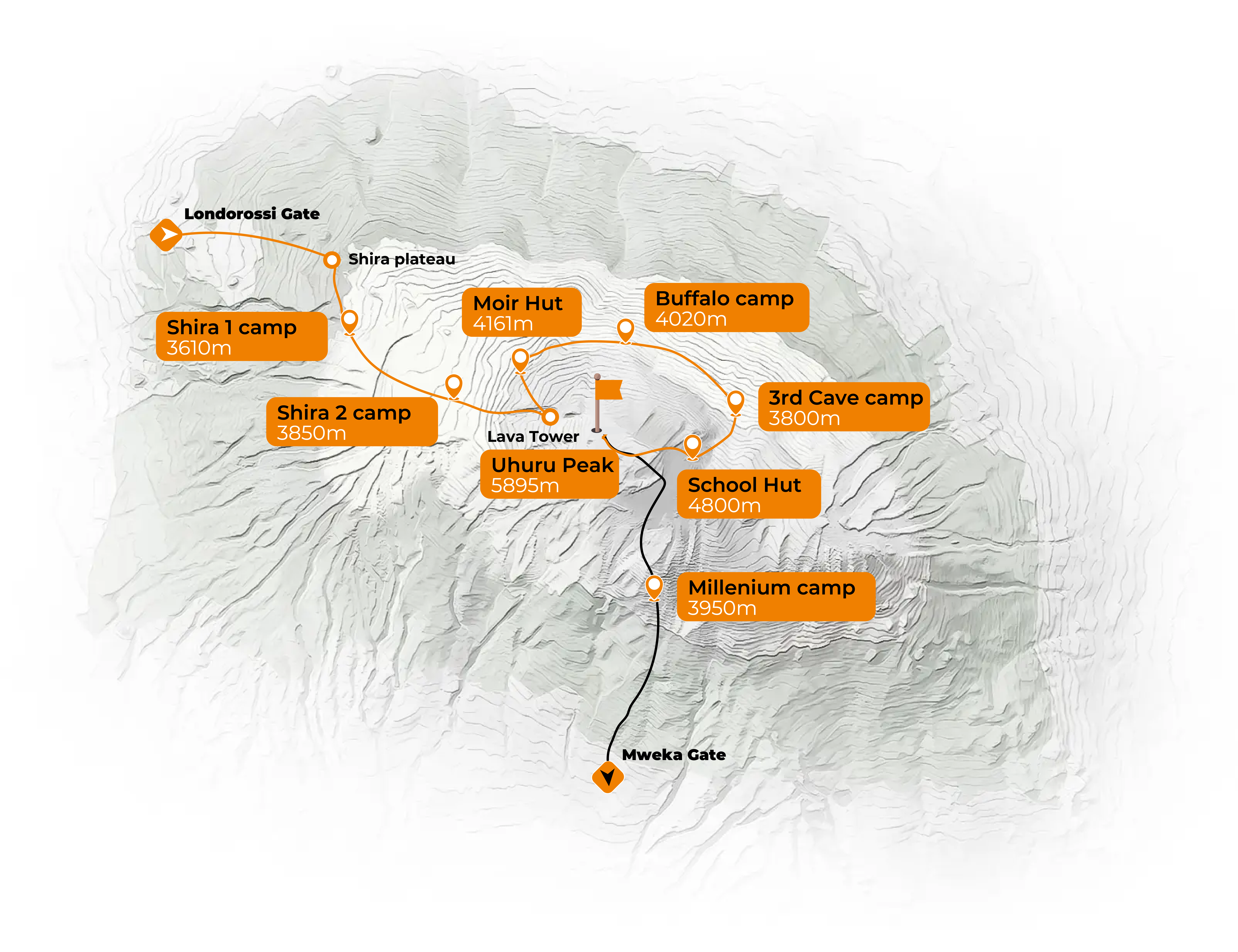
Traversing the Eastern slope of Kilimanjaro, the Marangu route offers a distinctive journey, highly sought after by climbers. Renowned for its popularity, over 30% of Kilimanjaro’s climbers in 2023 chose this well-trodden path, solidifying its position as the most favored route up the majestic mountain. What sets Marangu apart is its unique accommodation system; unlike other routes that rely on camping in tents, Marangu provides shared wooden huts for overnight stays, each accommodating groups of 4 to 10 individuals. This hut-based accommodation system presents a significant advantage, particularly during the rainy season, offering a more sheltered and comfortable option for climbers. Furthermore, Marangu stands out as the only route that utilizes the same trail for both the ascent and descent, providing climbers with a distinctive perspective as they traverse the familiar path during their entire journey. 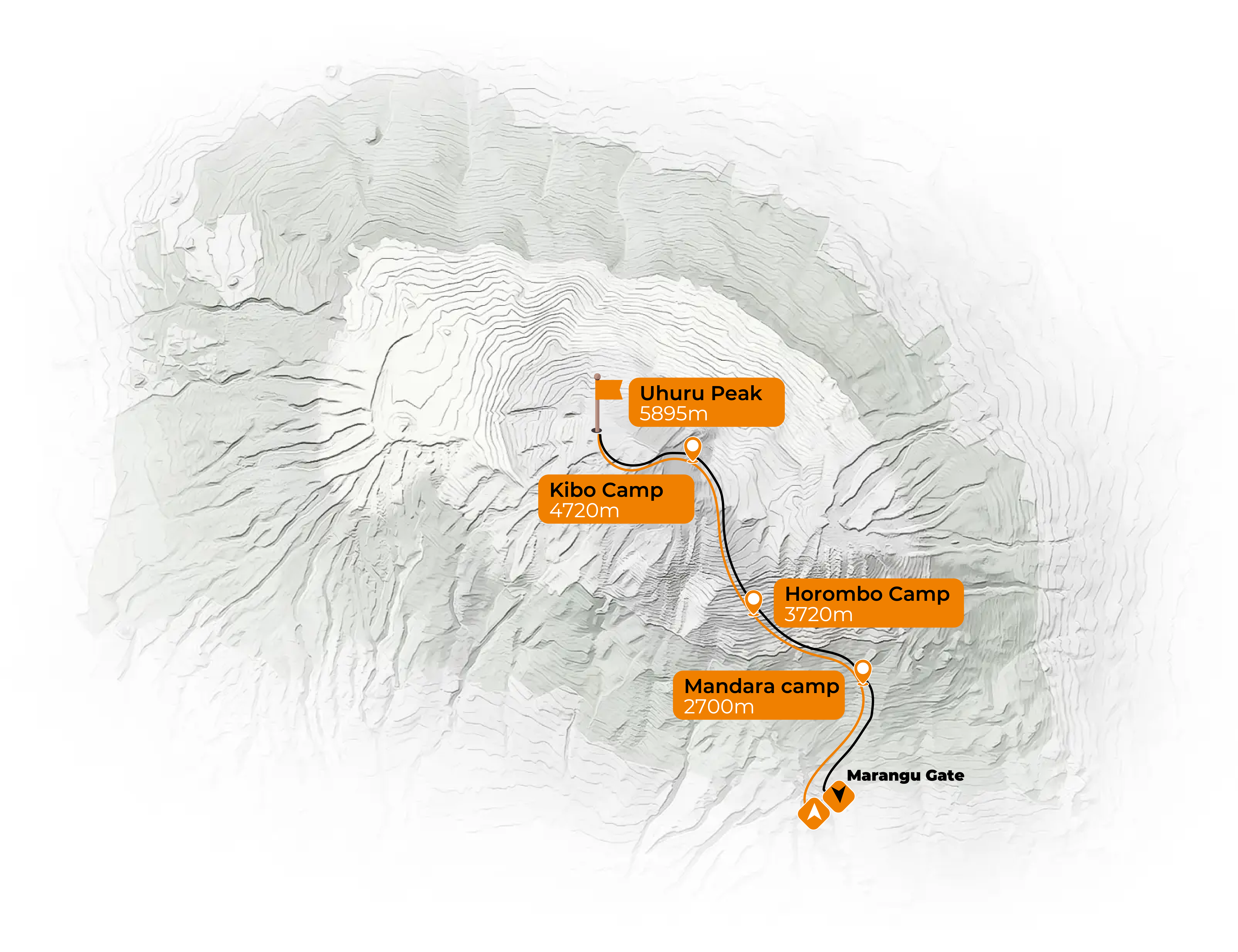
The Rongai route stands distinguished as the solitary pathway on the northern face of Kilimanjaro, situated in close proximity to the Kenyan border. Leading adventurers through a scenic and serene pine tree forest, this less-traveled route offers a unique and picturesque journey, making it an excellent choice for those seeking a quieter and more solitary Kilimanjaro climb experience. One of its standout features is the flexibility it offers, making it suitable for climbing at various times of the year, presenting a viable option for Kilimanjaro ascents regardless of the season. Moreover, the descent along the Rongai trail aligns with the eastern Marangu route, treating hikers to breathtaking panoramas of Kilimanjaro’s eastern expanse, unveiling awe-inspiring vistas that captivate and linger in the memories of those who traverse its winding paths.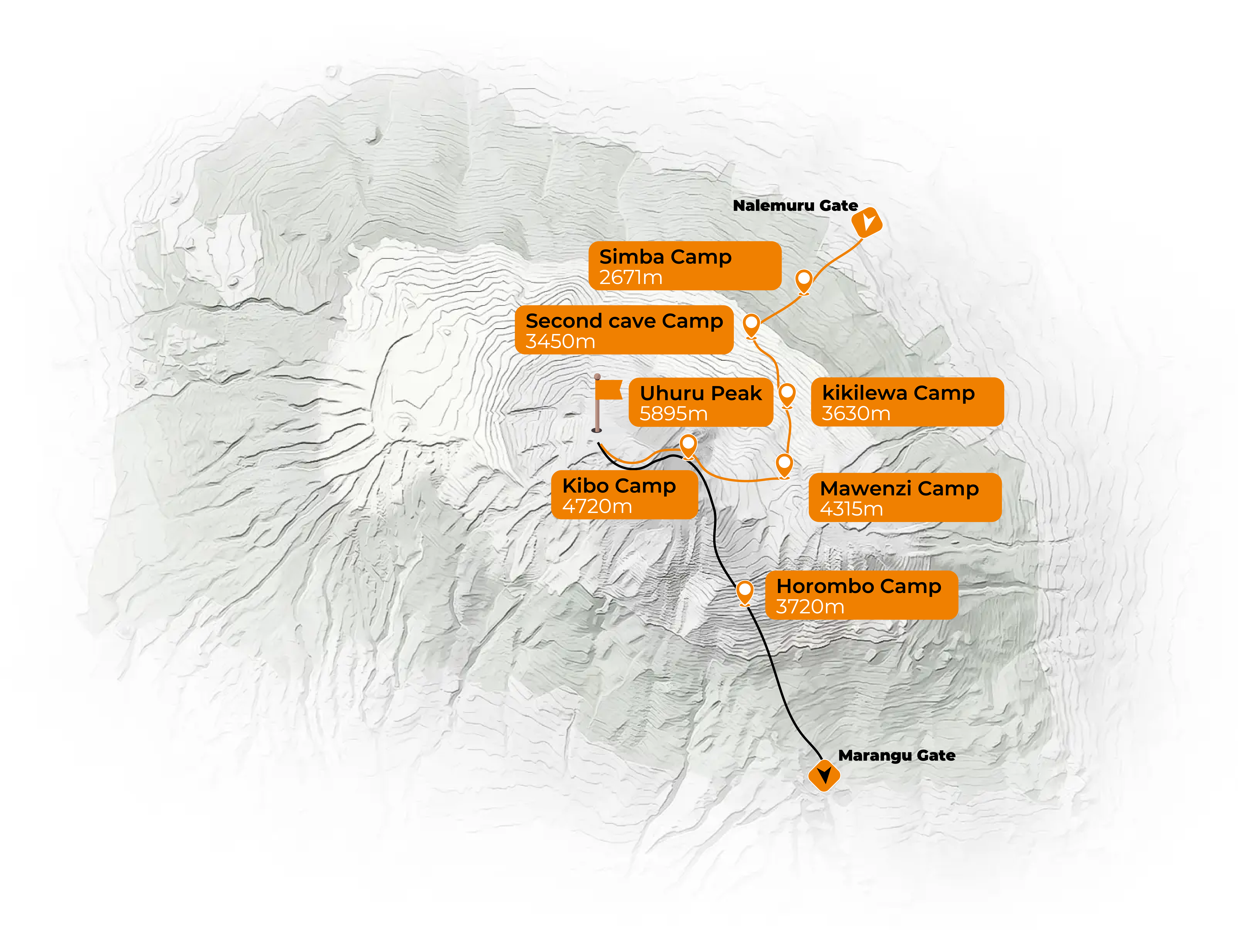
The Umbwe Route presents a formidable challenge, characterized by its steep and demanding initial trail, rendering it most suitable for climbers in excellent physical condition. This route’s steep ascent propels climbers to higher camps at a swifter pace compared to other trails, emphasizing the crucial significance of prior acclimatization for a successful summit attempt. Similar to the Machame Route, the Umbwe Route begins its journey by traversing through a captivating and lush rainforest. Here, amid the verdant canopy, climbers may encounter the enchanting sights of colobus monkeys and blue monkeys, adding a touch of wildlife allure to the challenging trek. However, the accelerated ascent of the Umbwe Route demands a higher level of fitness and acclimatization preparation, making it an exhilarating yet demanding path for determined adventurers seeking a more strenuous and direct route to Kilimanjaro’s summit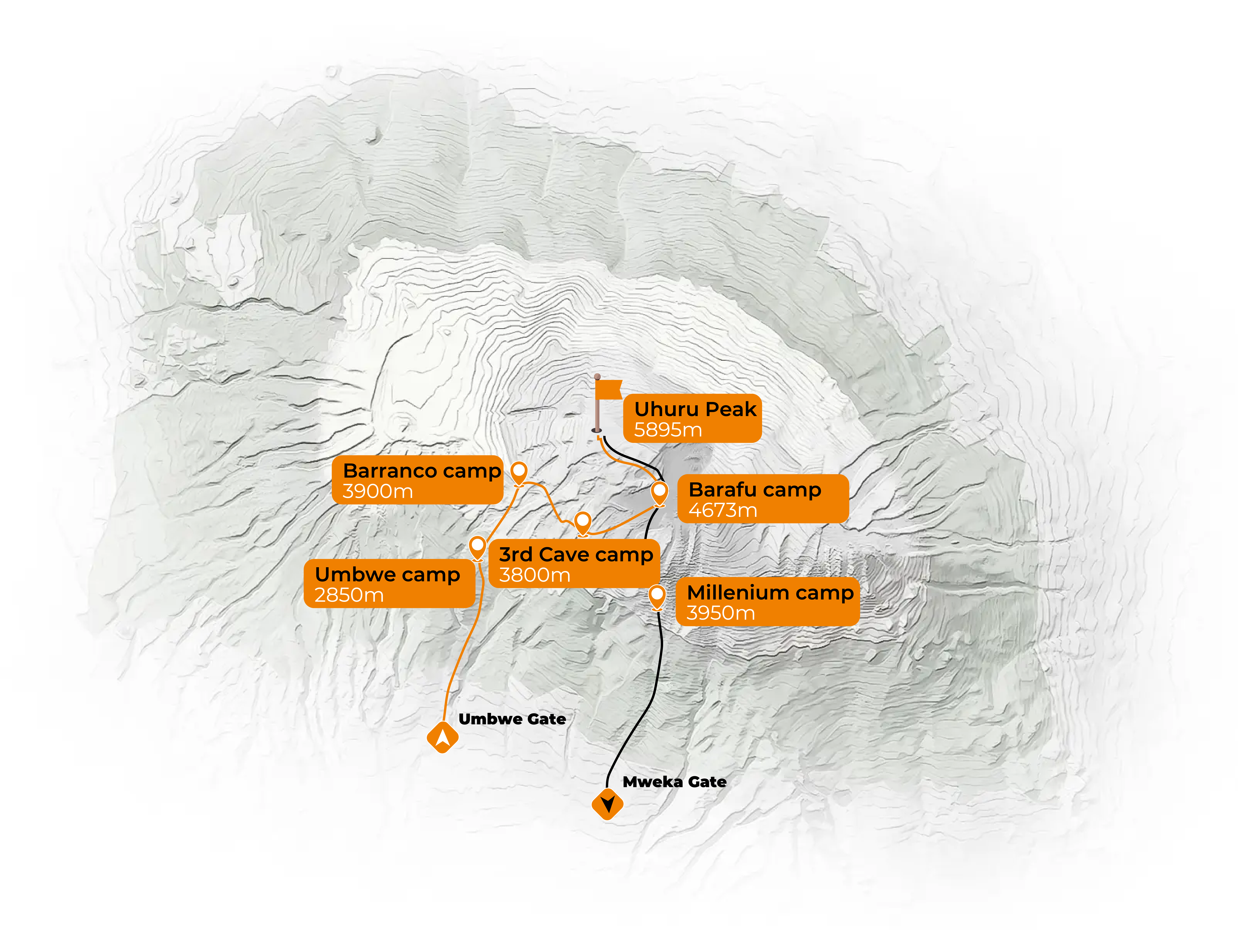
The Northern Circuit stands out as Kilimanjaro’s lengthiest and most panoramic route, setting off from the mountain’s western slope and encompassing a sweeping circuit around its cone before ascending to the summit from the western side. The descent, however, takes the southern slope. This impressive route offers trekkers a unique and breathtaking panoramic perspective, providing awe-inspiring vistas of Kilimanjaro from four distinct faces throughout the journey. However, while offering this unparalleled panoramic view, the Northern Circuit bypasses certain iconic features and attractions found on other routes. Notable exclusions along this path include the unique Dendrosenecio plants, indigenous to Kilimanjaro’s high altitudes, and the renowned Barranco Wall, a challenging yet iconic section on alternative routes like the Machame and Lemosho, known for its thrilling rock scramble and breathtaking views. Despite these omissions, the Northern Circuit’s extended duration and panoramic views make it an enticing choice for trekkers seeking a longer and more comprehensive Kilimanjaro experience.
The best time Climbing Kilimanjaro is during January to early March is generally considered an excellent time due to the favorable weather conditions. This period falls within one of Kilimanjaro’s dry seasons, offering climbers clearer skies, lower precipitation, and more stable weather, enhancing the overall climbing experience.
Here’s what you can expect during this time frame:
Best for: Hikers who want to minimize crowds, whilst still havi
The best time Climbing Kilimanjaro is during early March can be lovely, but as the month progresses, the rains can start to set in, making for muddy trails, cloudy skies, and poor visibility. In late March and late May, you can get lucky with some dry weather, but it’s a bit hit or miss.
Best for: Experienced trekkers who want to avoid crowds, and who don’t mind unpredictable weather. We recommend the routes on the north side of the mountain.
The best time Climbing Kilimanjaro is during June, July, August, and September is best recommended since they are most Kilimanjaro’s dry seasons and are considered prime months for climbing the mountain due to favorable weather conditions. Here’s what you can expect during this period:
Best for: Climbers wanting the best weather for their trip, who aren’t deterred by crowd
The best time Climbing Kilimanjaro is during October and November can be a mixed experience due to the transition from the dry season to the short rainy season. Short rains usually come in November and last for 3-4 weeks. Here are some things to consider:
Best for: Avoiding crowds, experienced trekkers who aren’t put off by wet weather.
The appeal of a Kilimanjaro Full Moon Climb lies in the combination of natural beauty, unique experience, and the chance to summit Africa’s highest peak under the enchanting glow of the full moon, making it a sought-after and memorable adventure for climbers. The best time for a Kilimanjaro Full Moon Climb is when the full moon aligns with the time you plan to reach the summit of Uhuru Peak which it is likely to occur every end of the month. But Kilimanjaro full moon dates change each month, so planning your climb around a specific full moon requires checking the lunar calendar and coordinating it with your trekking schedule.
Kilimanjaro’s staggering height at 19,341 feet (5,895 meters) above sea level presents a formidable challenge due to altitude-related hurdles. Acclimatization becomes pivotal in countering altitude sickness, a risk climbers face as they ascend. It’s imperative for climbers to understand the symptoms of altitude sickness, such as headaches and nausea, and take proactive measures to mitigate these risks. Additionally, gradual ascent, proper hydration, and physical preparedness are crucial elements for a successful and safe climb.
Kilimanjaro, nestled within a unique ecosystem, demands climbers’ environmental consciousness. Adhering to Leave No Trace principles, respecting local flora and fauna, and following park regulations are vital steps in preserving the mountain’s natural beauty. Upholding these practices ensures minimal impact and sustains the delicate balance of Kilimanjaro’s ecosystem for future generations to cherish.
Kilimanjaro’s trek spans contrasting climatic zones, from lush rainforests to icy summit conditions. Climbers face diverse temperatures and weather shifts, necessitating careful packing of appropriate clothing and gear for each stage. Being prepared for this climatic diversity ensures comfort and safety during the expedition, allowing climbers to fully embrace the breathtaking journey up Africa’s highest peak.
Choosing a guided climb markedly enhances the likelihood of reaching Kilimanjaro’s summit. Experienced guides serve as invaluable allies throughout the ascent, offering indispensable support, expertise, and guidance. They not only navigate the intricate routes but also handle logistical aspects, ensuring a smooth and well-organized expedition. More importantly, these guides play a pivotal role in monitoring climbers’ health and acclimatization, mitigating potential risks associated with altitude sickness. Their knowledge of the terrain, coupled with their ability to provide immediate assistance, significantly contributes to a safer and more enjoyable experience, allowing climbers to focus on the awe-inspiring journey while having confidence in their expert guidance.
Although technical climbing skills aren’t mandatory, maintaining good physical fitness is vital for conquering Kilimanjaro. Regular cardiovascular and strength training are essential to cope with the trek’s demands, reducing fatigue and enhancing endurance. Physical preparedness ensures climbers can navigate the diverse terrain and altitude changes, optimizing their chances for a successful and enjoyable ascent of Africa’s highest peak
